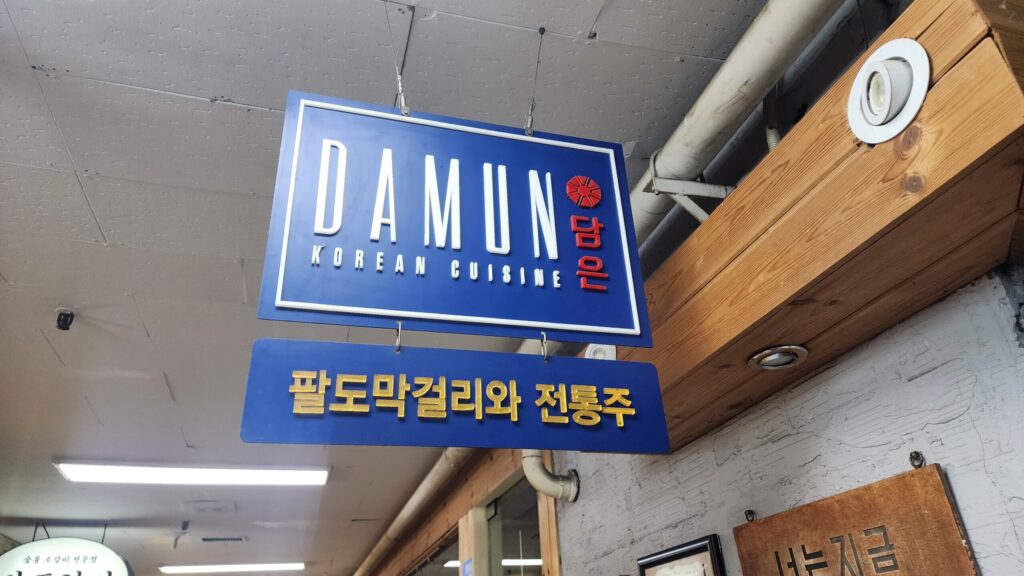
Dameun is my go-to spot in southern Seoul when I want to explore a variety of makgeolli.
The name “Dameun (담은)” comes from the Korean verb damda, meaning “to contain” or “to hold.”
It first opened in 2012, and I’ve been a regular since around 2016.
They carry around 100 different kinds of traditional Korean alcohol, and the food has noticeably improved since my first visit.
It’s one of the places I always recommend when friends visit from abroad.
I’ve even taken guests from Japan here.
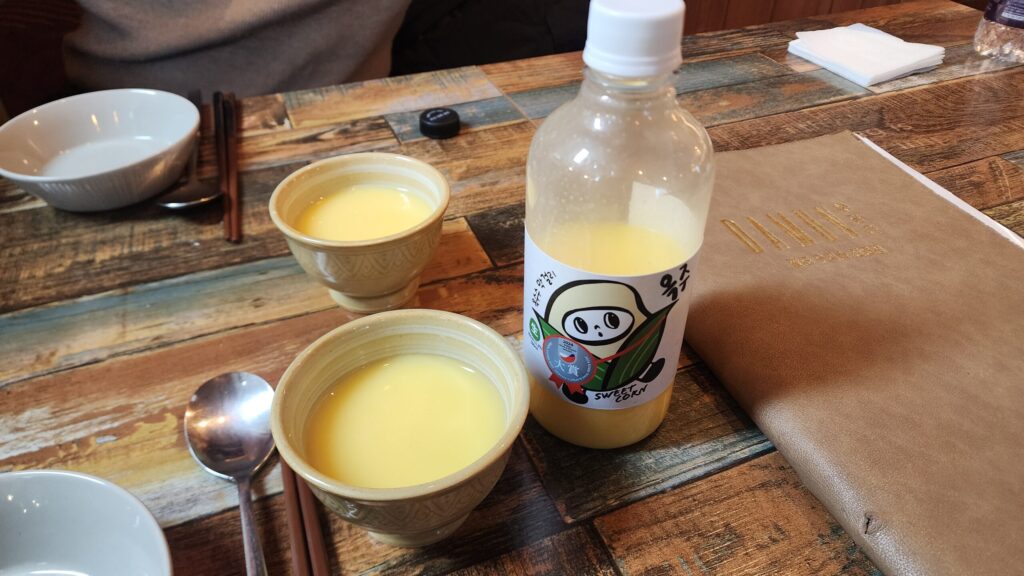
Starting with Makgeolli
Before the food arrives, I start with a refreshing glass of makgeolli.
It usually has a low alcohol content (around 4–5%), but the one I had today—called Okju—packs a bit more punch at 9%.
Made with corn and featuring a cute corn mascot on the label, Okju feels lighthearted and approachable despite the higher ABV.
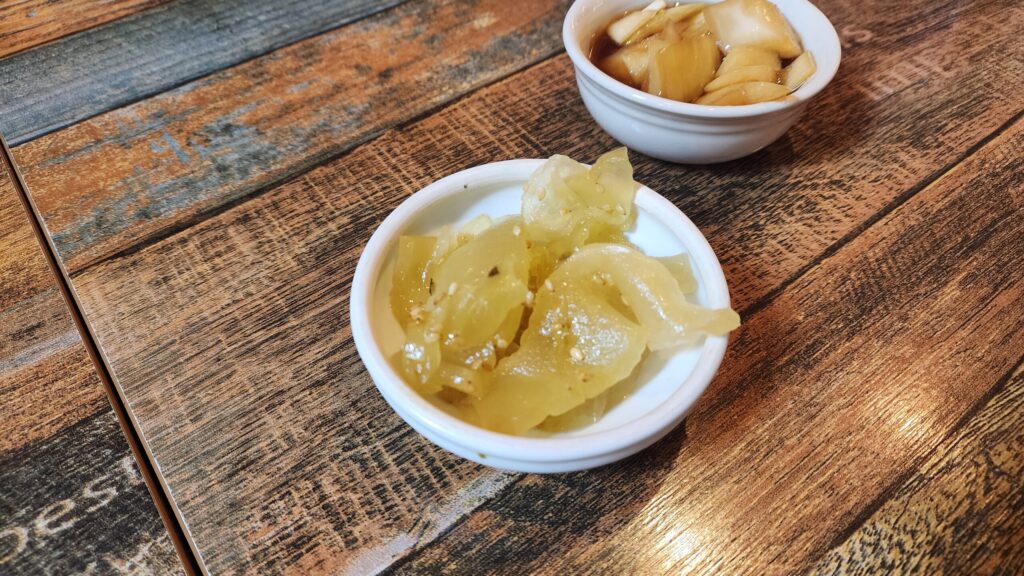
A Gentle Start: Uloe Pickles
The first side dish is a pickle made from uloe, a Korean melon variety.
Compared to typical Korean pickles, this one isn’t too salty.
It has a pleasant tanginess and a nutty hint from sesame oil.
(In Korea, this kind of pickle is called jangajji. While usually made with vegetables, it can also include seafood. Since salt is a key ingredient in the preservation process, jangajji tends to be quite salty.)

Three Kinds of Jeotgal with Steamed Tofu
At Dameun, the jeotgal (Korean salted seafood) selection includes octopus, pollock roe, and pollock intestines.
Like jangajji, jeotgal is a traditional Korean preserved food made with plenty of salt.
Similar versions exist in Chinese and Japanese cuisines as well.
The tofu is cut into four bite-sized pieces.
Each one is perfect for topping with your jeotgal of choice.
The tofu itself is mild and clean.
The octopus jeotgal is bold, with a chewy texture and rich seasoning.
The pollock roe (myeongran jeot) is creamy and savory, while the pollock intestines (changnan jeot) have a texture reminiscent of tripe, with a slight brininess.
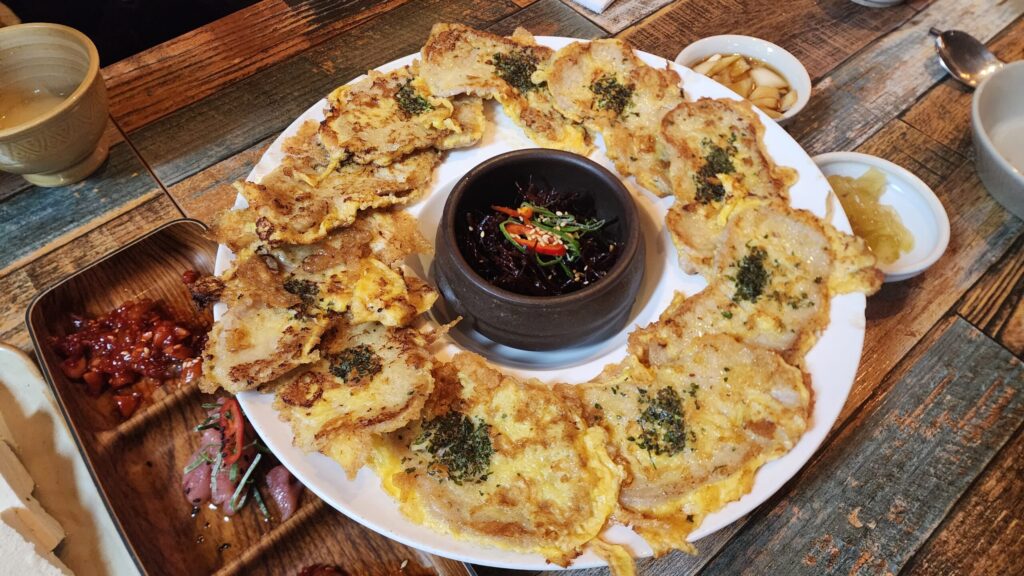
“Don-Damun” Pork Pancakes
In Korean, the word don means both “money” and “pork.”
These yukjeon (pan-fried pork slices) are humorously described as being “filled with money.”
Crispy on the outside and juicy inside, they’re rich in both flavor and meaning.
While yukjeon is typically made with beef, Dameun takes a unique approach by using pork.
Served warm, it’s comforting from the first bite—rich with toasty egg flavor and a tenderness that anyone can enjoy.
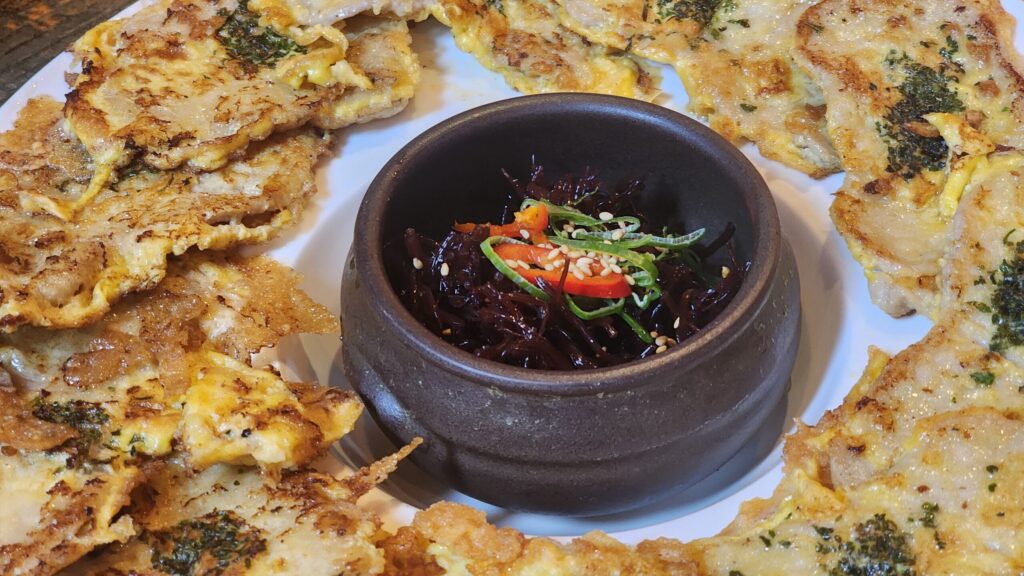
Seaweed with a Twist: Tot
In the center of the plate, you’ll find a small ceramic dish filled with tot, an edible seaweed.
In Korea, it’s usually served as a side dish or added to bibimbap.
But at Dameun, it’s seasoned with soy sauce and served on top of the yukjeon.
It adds a tangy brightness and a pleasant crunch that brings the dish to life.
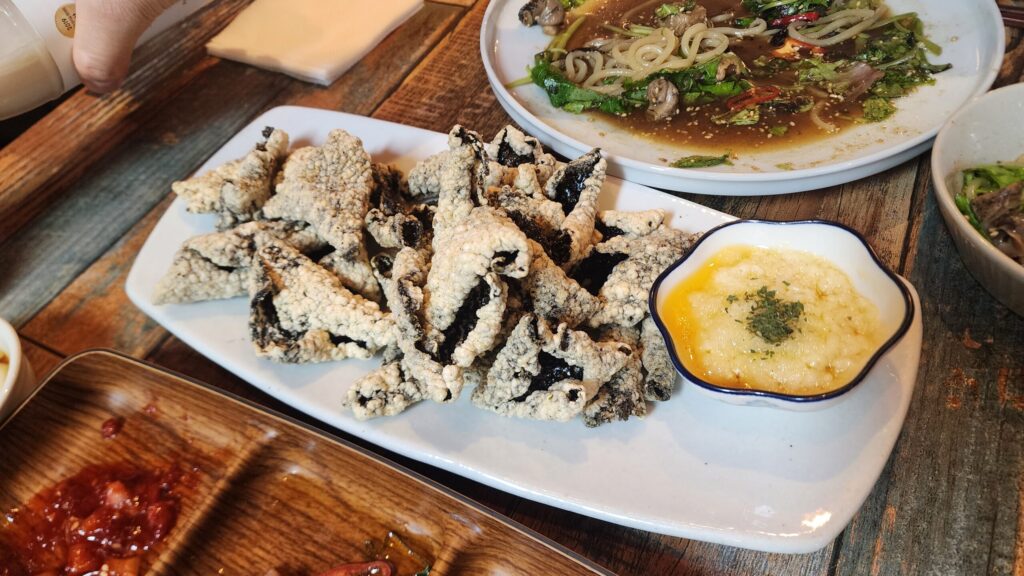
A Crispy Finish: Gim Bugak with Garlic Dip
This is the dish I always end my meal with at Dameun.
The seaweed (gim) is coated in glutinous rice flour and deep-fried to a perfect crisp.
It’s nutty, crunchy, and totally addictive.
It comes with a dipping sauce made from minced garlic and toasted sesame oil—nutty and savory, with just the right garlicky kick.
It’s almost like a Korean-style chip, and I still remember a friend of mine ordering it again and again on a past visit.
The official Instagram of Dameun
